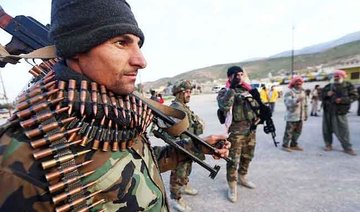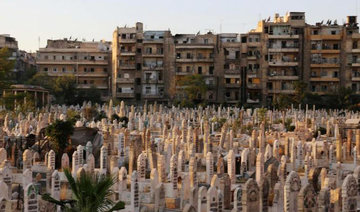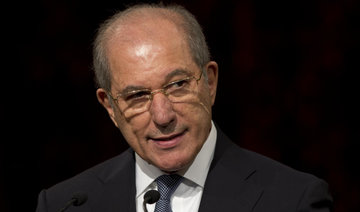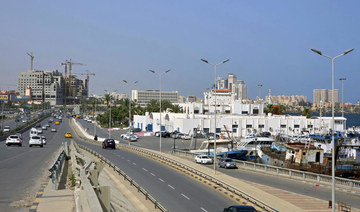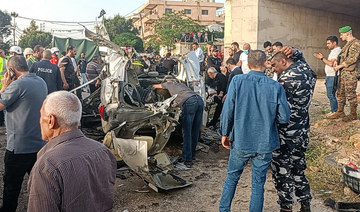BEIRUT: Syria’s long-running civil war may be winding down slowly, but the country is awash in weapons and a confounding array of local militias and thousands of foreign troops, some of which may never leave.
With crucial aid from allies Iran and Russia, President Bashar Assad has regained control over large areas of Syria in advances that appear to have put to rest the possibility of a military overthrow, at least for now. But his rule is extremely reliant on continued assistance from Iranian-sponsored militias, which have spread across the war-ravaged country.
The fight against the Daesh group, which proliferated soon after the conflict began in 2011, has provided a convenient justification for foreign troops to be deployed in Syria with the pretext of fighting the extremists. Now that Daesh no longer holds any significant urban territory in Syria, the numbers of some forces may be scaled down, but foreign powers with longer-term ambitions and interests will try to maintain a presence in the country for years to come. That will further complicate prospects for a peace settlement.
Some countries have already indicated that they plan to stay for the foreseeable future.
The Americans
The presence of US troops in northern Syria was initially meant to help train and support Kurdish-dominated local forces fighting the Daesh group.
The number of troops has grown gradually. Although the official limit on US troops has remained at 503 since shortly before President Barack Obama left office, the actual number is now believed to be more than 1,500, including special forces, a Marine artillery unit, forward air controllers and others. They are spread across more than a dozen bases in northern Syria.
The end of the fight against Daesh takes away any legal justification for the presence of US troops in Syria, but US officials are now suggesting they plan to maintain a US troop presence in the north until an overall settlement for the war is found. That has raised concern about a more permanent project that risks drawing the US into a conflict with Syria and Assad’s ally, Iran.
“We’re not just going to walk away right now before the Geneva process has cracked,” US Secretary of Defense Jim Mattis said earlier this month, referring to the UN-backed political talks.
Kurdish officials have asked the US to stay on, fearing that a quick withdrawal would facilitate Assad’s forces swooping in on Kurdish-held territory in the north.
Earlier this month, the Syrian government called on the United States to withdraw its forces now that the fight against the Daesh group is nearly over. The Foreign Ministry statement said the presence of US troops will not force a political solution to the conflict.
The Russians
Russia has never said how many of its military personnel, warplanes and other weapons are in Syria. Turnout figures in voting from abroad in the September 2016 parliamentary election indicated the number of Russian military personnel in Syria at the time was about 4,300. The Russian presence has likely increased, as Moscow this year deployed its military police to patrol so-called “de-escalation zones” in Syria.
Open-source materials — including video from the Hemeimeem air base, the main hub for the Russian military in Syria since its campaign began in September 2015 — indicate that Russia has several dozen jets and helicopter gunships there.
Russia also has deployed special forces to conduct intelligence and coordinate airstrikes. Senior Russian military officers also have helped train and direct Syrian government troops. In recent months, Russian military police have become increasingly visible in Syria.
The chief of the Russian military general staff, Gen. Valery Gerasimov, said last week that Russia will “significantly” reduce its military foothold in Syria as the campaign nears its end.
At the same time, he indicated Russia will maintain a presence at both the Hemeimeem air base and the navy supply facility in Tartus. Gerasimov added that the military’s Reconciliation Center, a group of officers who have helped negotiate and maintain truces in Syria and coordinated the delivery of humanitarian aid, also will stay.
Syria has allowed Russia to use Hemeimeem air base indefinitely without cost. Moscow also has signed a deal with Syria to use the Tartus base for 49 years, which could be extended if both parties agree.
The Russian military plans to modernize the air base to allow it to host more warplanes. It also intends to expand the Tartus facility significantly to make it a full-scale naval base capable of hosting warships, including cruiser-sized vessels.
The Iranians and sponsored militias
Of all the foreign troops in Syria, perhaps none have been as widespread and potentially lasting as the Iranians. The Islamic Republic of Iran has made an enormous effort to keep Assad in power, providing extensive military and financial support throughout the six-year civil war.
It has deployed Islamic Revolutionary Guards in Syria as well as Iranian officers who provide military and political support. Iranian officials say more than 1,000 Iranian fighters have been killed in Syria and Iraq after they were deployed to defend Shiite holy shrines.
Tens of thousands of Iranian-sponsored pro-government local militias known as the National Defense Forces are deployed across Syria, in addition to Iraqi Shiite militias and thousands of Iranian-backed Hezbollah fighters from Lebanon who have been key factors in turning the war in the government’s favor. Hezbollah is deployed in wide areas along Syria’s border with Lebanon, where the Shiite group has built military facilities and long-term bases it is unlikely to leave anytime soon.
Iran’s strategy aims to ensure it can continue to pursue its vital interests after the war, using parts of Syria as a base and making certain that a land corridor from Tehran to Beirut remains open.
The Turks
Turkey first sent ground forces into Syria last year in a campaign dubbed “Operation Euphrates Shield.” It was aimed at fighting the Daesh group, although Turkey also seeks, above all, to limit the expansion of Syria’s Kurds along its border with Syria. Ankara perceives the Syrian Kurdish fighters to be an extension of the Kurdish insurgents who have waged a three- decade insurgency in Turkey.
Turkish officials have not disclosed how many Turkish soldiers are deployed in Syria but security experts estimate that at least 2,500 troops are stationed in a swath of territory revolving around the towns of Al-Rai, Al-Bab and Jarablus — a border zone that Turkey and Turkey-backed rebels took back from IS last year under “Euphrates Shield.”
An estimated 400 more Turkish troops are in the Idlib region as part of an agreement reached among Turkey, Russia and Iran to create a “de-escalation zone” in the area.
Turkey is building schools and hospitals in areas liberated under “Euphrates Shield” to encourage the return of refugees, and it was unclear how long the Turkish troops would stay in the zone.
President Recep Tayyip Erdogan has suggested that the Turkish troops could target a Syrian Kurdish group that Turkey considers to be a security threat in the Afrin region, north of Idlib, once the “de-escalation” mission is over.
Thousands of foreign troops in Syria: but will they leave?
Thousands of foreign troops in Syria: but will they leave?
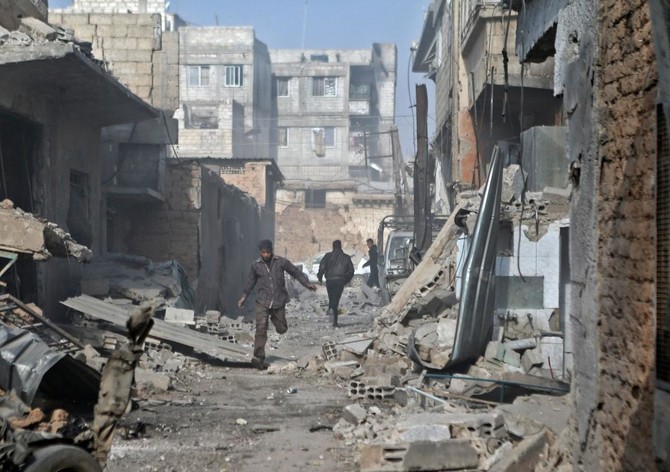
Three Syrians missing after cargo ship sinks off Romania

- Eight sailors were rescued by one of the nearby commercial vessels, while the search for the other three, “all of Syrian nationality,” was continuing, the statement said
BUCHAREST: Romanian rescue teams on Saturday were scouring the Black Sea for three Syrian sailors who went missing when their cargo ship sank off the coast, the naval authority said.
The Mohammed Z sank with 11 crew on board, 26 nautical miles off the Romanian town of Sfantu Gheorghe in the Danube delta in the Black Sea on Saturday morning, officials said in a statement.
The ship sailing under the Tanzanian flag was carrying nine Syrian and two Egyptian nationals, it said.
After receiving an alert at “around 4:00am,” naval authorities and border police were dispatched, with two nearby commercial vessels also joining the search and rescue operation.
Eight sailors were rescued by one of the nearby commercial vessels, while the search for the other three, “all of Syrian nationality,” was continuing, the statement said.
The cause of the accident was unclear.
According to the specialist website Marine Traffic, the ship departed from the Turkish port of Mersin and was heading to the Romanian port of Sulina.
Since the start of Russia’s war in Ukraine, drifting sea mines have posed a constant threat for ships in the Black Sea, with countries bordering it doubling down on demining efforts.
Ensuring safe passage through the Black Sea has gained particular importance since Romania’s Danube ports became hubs for the transit of grain following the Russian blockade of Ukraine’s ports.
Iraq parliament fails to elect a speaker

- A coalition of three Sunni blocs backed Issawi, while Mashhadani, who served as Iraq’s first speaker following the adoption of the 2005 constitution, received the support of the former speaker Mohamed Al-Halbussi’s sizeable bloc
BAGHDAD: Iraq’s lawmakers failed to elect a speaker on Saturday as neither of the two main candidates secured a majority during a tense session of parliament.
It is the latest in a series of failed attempts to replace the former head of parliament who was dismissed in November, with political bickering and divisions between key Sunni parties derailing every attempt so far.
Saturday’s vote was the closest yet to selecting a new head of the 329-member parliament, with 311 lawmakers showing up for the session and the leading candidate falling just seven votes short.
The parliament’s media office announced that 137 lawmakers chose Mahmoud Al-Mashhadani, the oldest MP, while 158 picked Salem Al-Issawi.
However, candidates require at least 165 votes to win.
Many lawmakers did not return for a second attempt on Saturday, with local media sharing videos of a brief brawl between MPs and reporting that at least one of them was injured.
The parliament’s media office then announced that the session had been adjourned.
Iraq, a mosaic of different ethnic and religious groups, is governed by complex power-sharing arrangements.
The largely ceremonial role of president traditionally goes to a Kurd, that of prime minister to a Shiite, while the speaker of parliament is usually Sunni.
But parliament is dominated by a coalition of pro-Iran Shiite parties, reflecting the country’s largest religious group.
A coalition of three Sunni blocs backed Issawi, while Mashhadani, who served as Iraq’s first speaker following the adoption of the 2005 constitution, received the support of the former speaker Mohamed Al-Halbussi’s sizeable bloc.
The new speaker will replace Halbussi, the influential politician dismissed by Iraq’s top court in November last year after a lawmaker accused him of forging a resignation letter.
Halbussi had been the country’s highest-ranking Sunni official since he first became a speaker in 2018.
The new speaker’s stint will not last long with the general election due in 2025.
Libyan armed groups clash near capital Tripoli

- Libya is divided between the UN-recognized Tripoli-based government and a rival administration in the country’s east
TRIPOLI: Clashes between Libyan armed groups broke out on Friday night in the city of Zawiya, some 40 kilometers west of the capital Tripoli, a security official told AFP.
An official at the city’s security directorate told AFP the clashes were ongoing but “intermittent” on Saturday.
“The southern areas of the city of Zawiya have been witnessing clashes between armed groups since last night,” the official said.
Libya is still struggling to recover from years of war and chaos after the 2011 overthrow of longtime dictator Muammar Qaddafi.
On Saturday morning, schools in Zawiya were suspended as some roads leading to the city were shut down amid a “casual” exchange of fire between the groups, the official said.
Media reports said the fighting left casualties, but authorities in Tripoli have yet to confirm any.
The Tripoli-based health ministry said in a statement it was working to evacuate parts of the city and taking injured people to hospitals.
The Libyan Red Crescent said it had evacuated some families from areas affected by the fights.
Authorities have not disclosed the reasons behind the fight.
Videos shared since Friday night on social media, which AFP could not verify, showed armed men in SUVs firing heavily at other armed groups.
Other videos showed smoke rising from parts of the city.
Although relative calm has returned to the oil-rich country in the past few years, clashes periodically occur between its myriad armed groups.
Last month, clashes broke out in the capital Tripoli, sparking panic among locals who were celebrating the end of the Muslim fasting month of Ramadan.
In August 2023, Tripoli’s worst armed clashes in a year left 55 people dead when two powerful groups fought.
Libya is divided between the UN-recognized Tripoli-based government and a rival administration in the country’s east.
How women and girls in war-torn Gaza are coping with water, sanitation and hygiene collapse

- UN Women has described ongoing Israel offensive as a “war on women” with at least 10,000 female deaths since last October
- Deprived of access to adequate services, more than 1 million women and girls face daily challenges and serious health risks
LONDON: Deprived of adequate access to water, sanitation, and hygiene services, Palestinian women and girls in Gaza are bearing the brunt of the prolonged and deepening humanitarian emergency caused Israel’s ongoing military offensive.
With no resolution to the conflict between Israel and Hamas in sight, more than a million displaced women and girls in the embattled Palestinian enclave continue to endure daily challenges in increasingly dire conditions.
UN Women has described the Israeli military operation in Gaza, which began in the wake of the Oct. 7 Hamas-led attack on southern Israel, as a “war on women,” with at least 10,000 killed since the start of the conflict — among them more than 6,000 mothers.
Those figures, published in April, are now likely far higher as Israel expands its operation and bombing raids into eastern Rafah — Gaza’s southernmost city, now home to some 1.4 million displaced Palestinians.

According to UN figures, this latest operation has forced an estimated 150,000 Palestinians to flee central and northern Rafah.
While the biggest risk to women and girls in Gaza is injury or death under Israeli bombardment, “the unhygienic conditions and lack of water in Gaza are also having a very negative impact on women and girls’ health and dignity,” Fikr Shalltoot, the Gaza programs director at Medical Aid for Palestinians, told Arab News.
Israel denies deliberately targeting civilian infrastructure, accusing Hamas of using residential areas for cover.
As summer approaches, soaring temperatures worsen the spread of communicable diseases caused by a lack of hygiene facilities, water, and access to proper food. The heat itself is also a significant danger to children and the elderly.
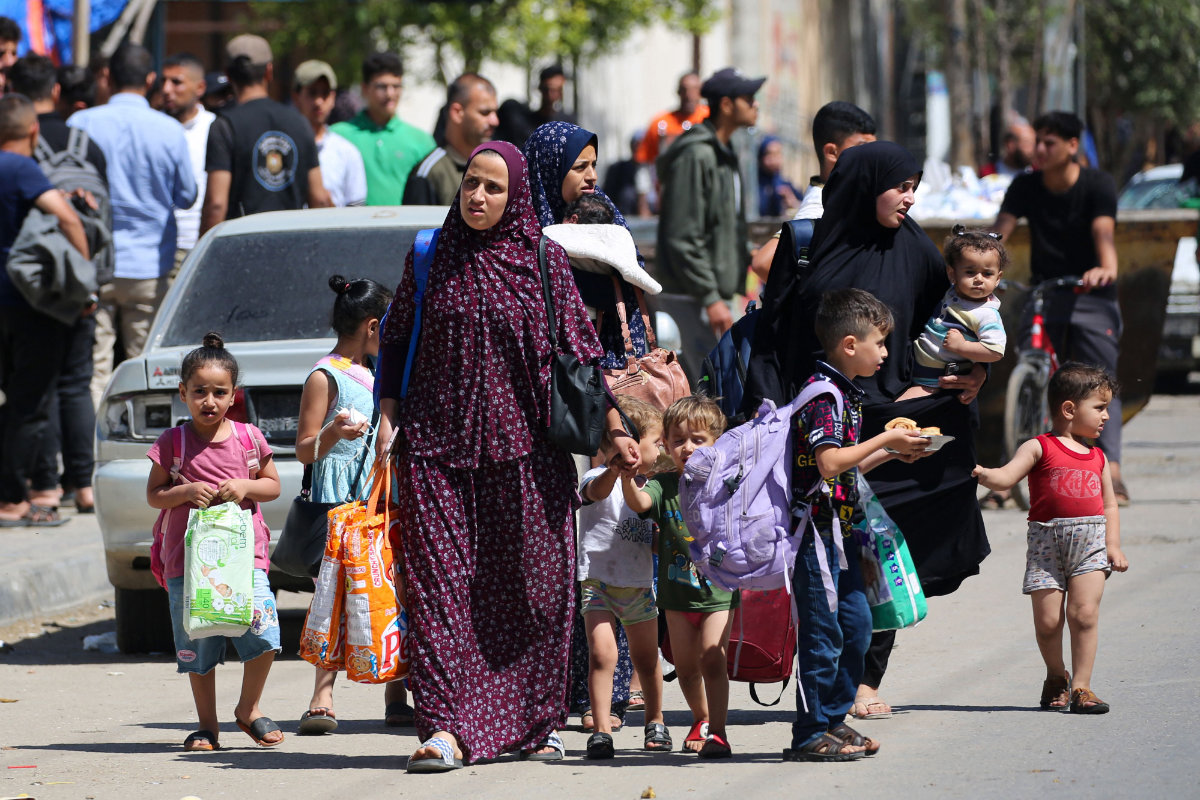
“During a recent heatwave, a 5-year-old girl tragically died in her tent due to extreme heat,” Shalltoot said.
Analysis of satellite imagery by BBC Verify found that the Israeli operation in Gaza has damaged or destroyed more than half (53 percent) of the territory’s vital water and sanitation facilities.
The analysis, based on images acquired in March and April, also confirmed that four of the six wastewater treatment plants in Gaza have been damaged or destroyed. These facilities were critical to preventing sewage buildup.
Fidaa Al-Araj, Oxfam’s food security, cash, and protection coordinator in Gaza, said the water, sanitation, and hygiene situation facing women and girls in the enclave was “challenging,” leaving them unable to access clean toilets or private shower spaces.
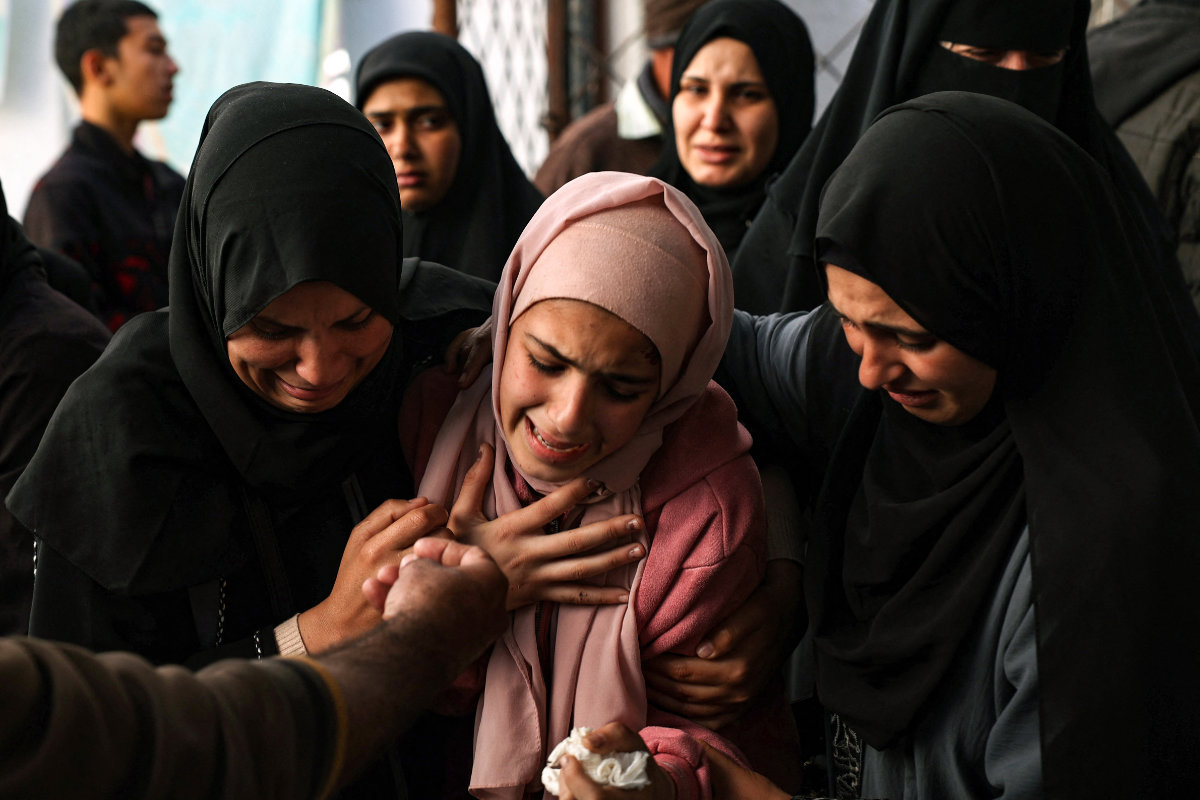
“Having been displaced into camps or even in a host community, the numbers of people, of internally displaced persons, are very, very high,” Al-Araj told Arab News. “So, there is (overcrowding), there are many difficulties in having access to toilets, bathrooms, showers.”
She added: “Even if you have the facilities, and even if by any stretch they are enough for the IDPs residing in any given space, there is the issue of lack of running water to supply those facilities and to have them up and running all the time.
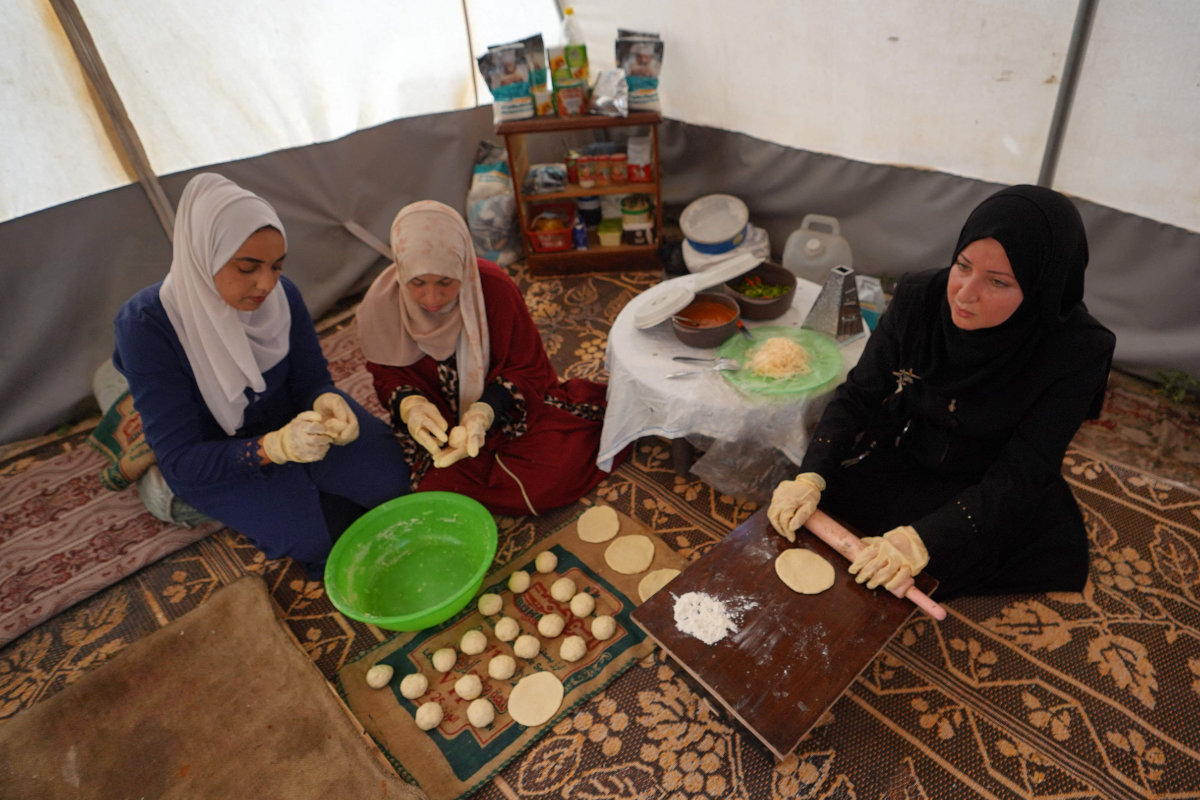
“So, the hygiene conditions are very compromised, to say the least. When it comes to women and girls, there are issues of privacy, which is completely lacking.”
Where washrooms are present, people have “to wait in line with all sorts of people, even strangers, men and women, just to use the toilet. You have people banging on the door of the toilet while you’re in there, asking you to hurry up because the line is still very long.”
INNUMBERS
• 700,000 Women and girls now hosted in Rafah who have nowhere else to go.
• 93% Women surveyed who feel unsafe in their own homes or in displacement.
• 6/10 Women who reported complications in pregnancy since Oct. 7.
Source: UN Women
This also makes management of menstruation especially challenging, as women and girls “endure longer hours without changing a pad, without washing,” Al-Araj added.
According to UN figures, there are more than 690,000 menstruating women and adolescent girls in the Gaza Strip. But aid agencies, which have had very limited access to the enclave due to the Israeli blockade, have been unable to meet the high demand for hygiene kits.
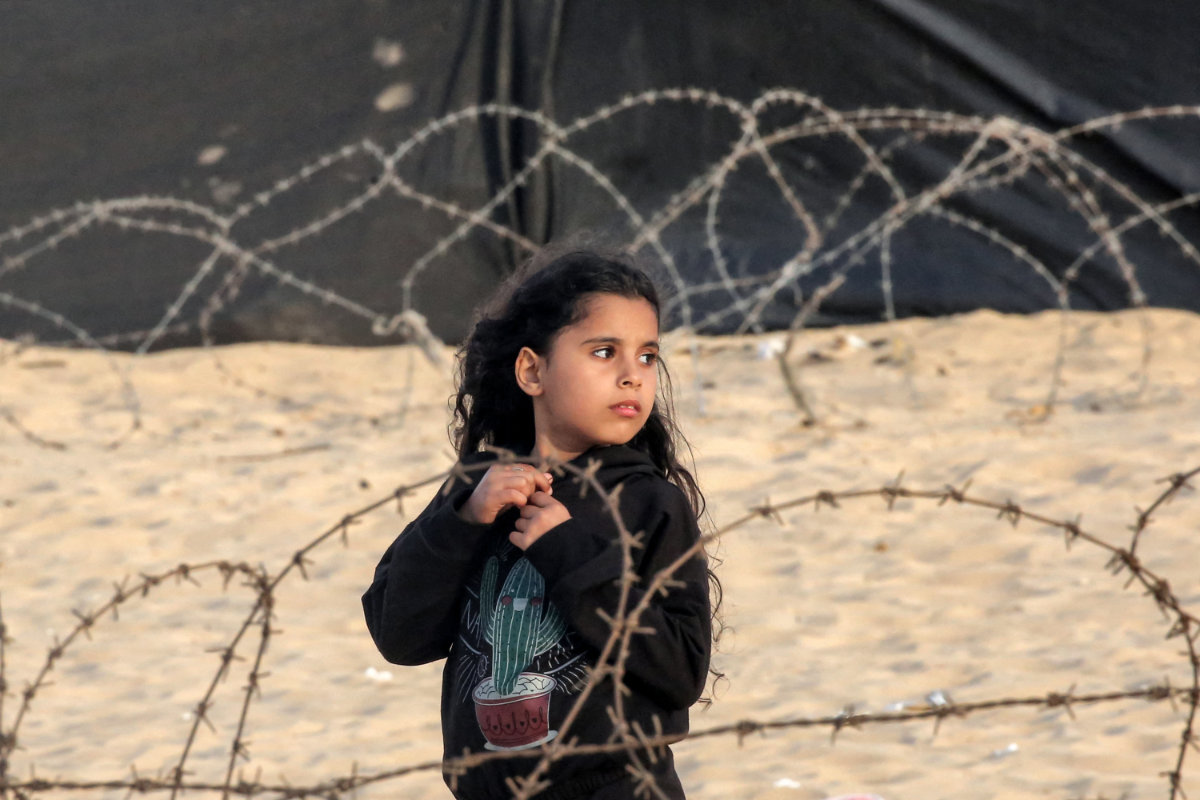
And since Israel took control of the Palestinian side of the Rafah border crossing on May 7 and closed the nearby Kerem Shalom crossing, the already limited flow of commercial goods and humanitarian aid has been further strangulated.
MAP’s Shalltoot confirmed that women’s sanitary products were “scarce in the local market,” highlighting that this has had “a psychological and physical health impact on women and girls.”
She said: “They resort to homemade, makeshift alternatives, which negatively impact their health by putting them at risk of reproductive and urinary tract infections and protection-related risks.
“This also negatively impacts their psychological well-being, anxiety and insecurity.”
Even the simple act of taking a shower has been almost impossible for women in Gaza for several months.
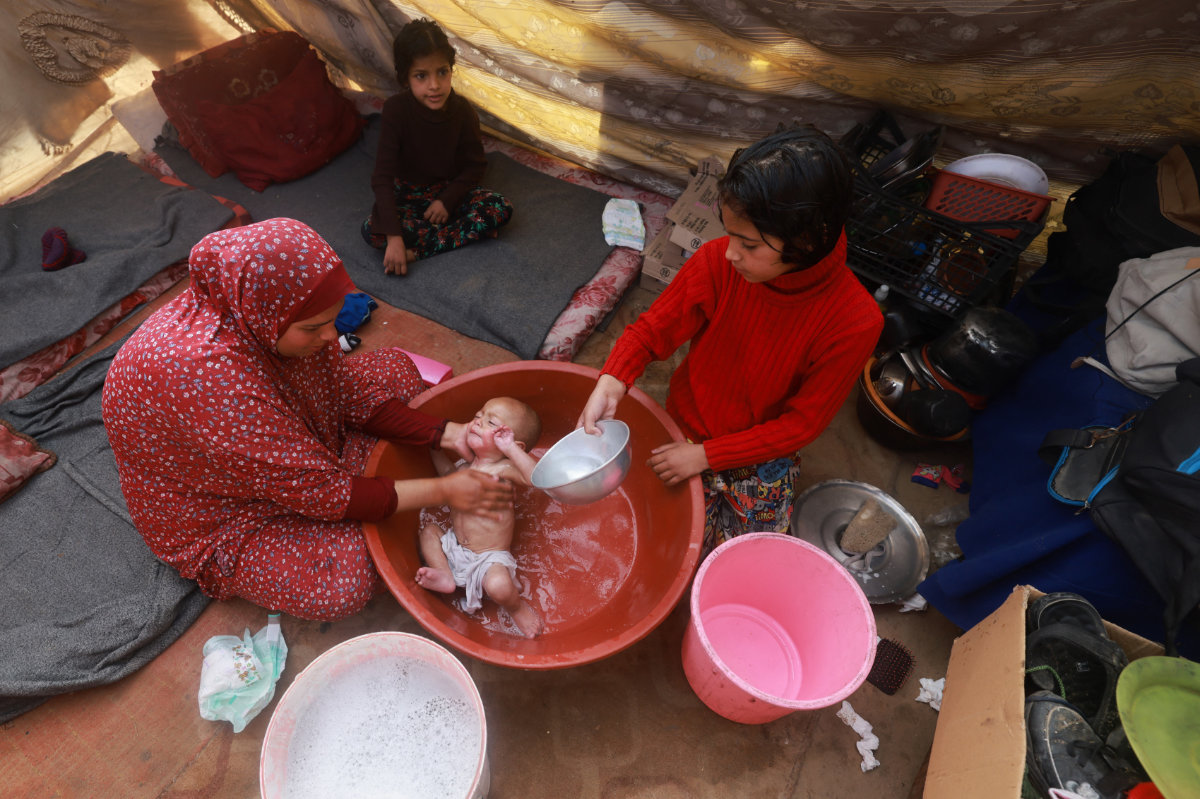
“It’s very difficult to find a spot designated to take showers, and if it’s there, it’s very difficult to have water,” Oxfam’s Al-Araj said. “And if the water is there, it’s very difficult to find time to take an adequate shower.”
She added: “As a woman and as a mother of girls, I’ve been through all of this. To overcome these circumstances, you space out the shower times, so you take a shower when it’s absolutely needed.
“Sometimes you could spend a couple of weeks or even more without taking a shower.”
The aid agency Medecins Sans Frontieres told the BBC that the destruction of water, sanitation and hygiene facilities has led to “disastrous health consequences for the population,” notably a significant rise in gastric complaints in Rafah.
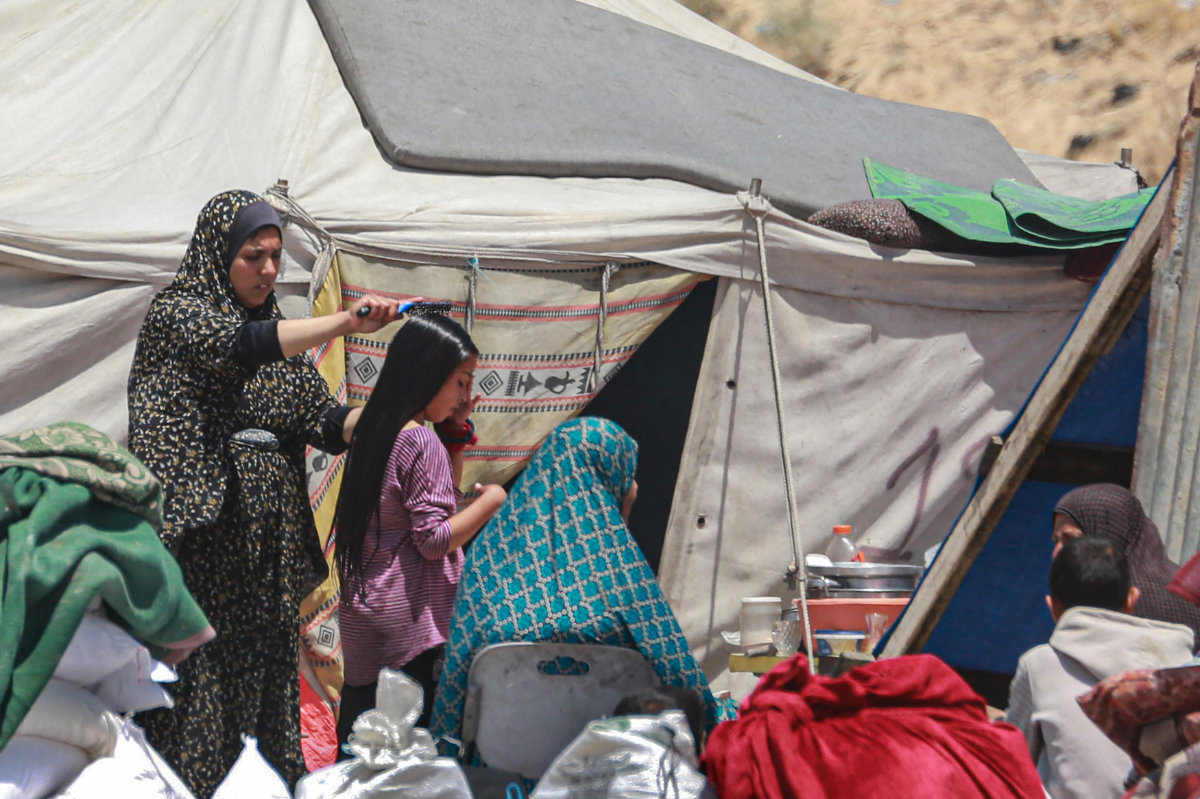
Contaminated water has also led to a spike in hepatitis A cases, with women and girls facing a heightened risk of exposure to the disease due to their traditional domestic responsibilities and caring for the sick, according to UN Women’s April gender alert report.
The report, titled “Scarcity and Fear,” highlighted that the lack of adequate and dignified facilities also exposes women and girls to reproductive and urinary tract infections.
“This situation could develop into dangerous or concerning health conditions for the women and girls, and I’m really sorry to say that it’s not given priority,” said Al-Araj.
“The heightening demand on the time, resources, and capacity of the medical facilities and staff makes prioritizing women’s issues or girls’ issues very difficult.”
Moreover, there are no quick fixes. Even if sufficient aid is permitted to enter Gaza, facilities need to be carefully planned in order to meet the necessary standards of privacy, cleanliness, and safety.
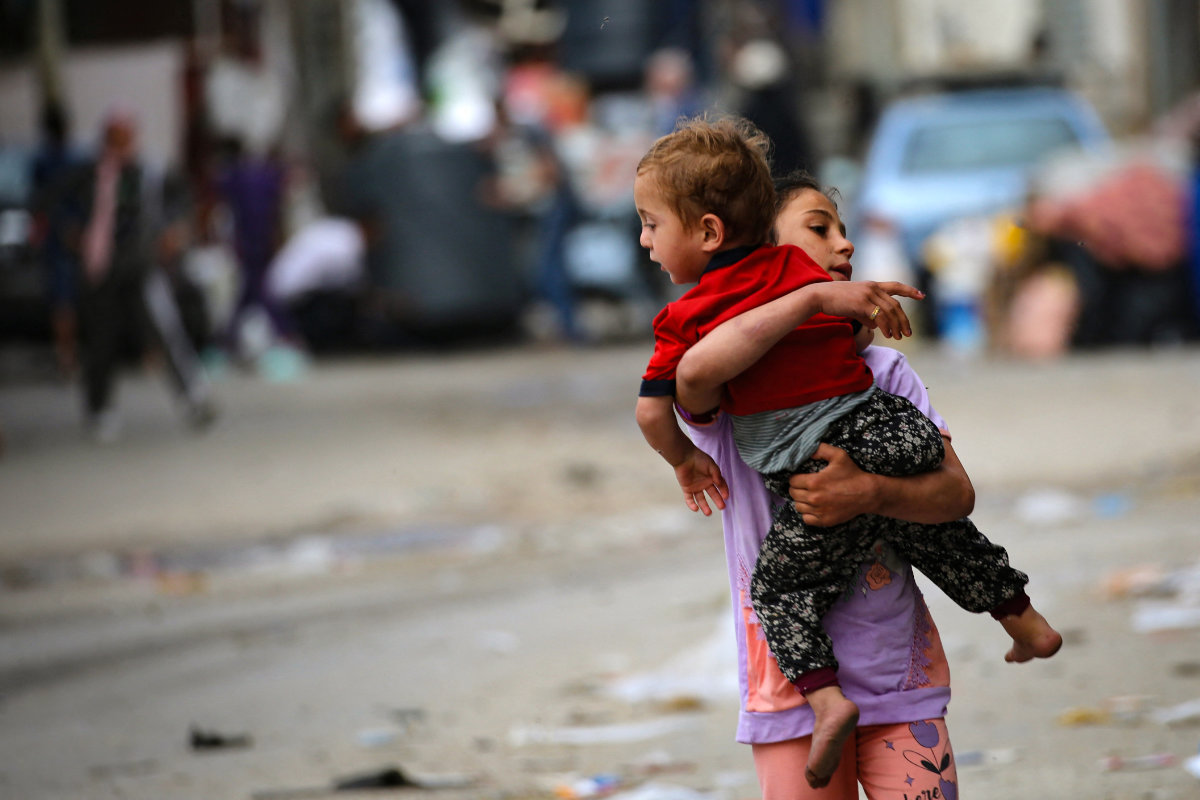
“It’s not enough to build a shower or a toilet,” said Al-Araj. “It’s not enough to provide it with water and that’s it. You have to think of the site … Is it safe for women and girls, is it accessible at all times … is it targeted maybe by different threats?
“You also have to think about the supplies. You don’t give a hygiene kit or a dignity kit once, for example, and that’s it, your work is done. You need to regularly provide those kinds of kits.”
Al-Araj also emphasized the need for “complementary services,” including extending responses “to enhancing access to sexual and reproductive health care system.
“I can only wish that the aftereffects of all of this wouldn’t linger for long or have irreversible results.”

Israeli army continues drone warfare against Hezbollah

- Hezbollah said in a statement that it targeted the Ras Naqoura naval site with artillery in response to the drone strike
BEIRUT: Israel widened its drone attacks on Hezbollah and Hamas fighters in Lebanon on Saturday, with strikes near the Lebanese-Syrian border in parallel with attacks in the south of the country.
An Israeli combat drone struck a car carrying two people on the road between the Lebanese General Security and Syrian General Security checkpoints.
The Syrian Observatory confirmed the attack, saying that “the target in the car was a Hezbollah leader and his companion.”
Footage taken by passersby on the border road showed the vehicle on fire, with flames and smoke rising from surrounding areas, suggesting that more than one missile struck the target.
Sham FM radio, which is close to the Syrian regime, later confirmed that an Israeli attack destroyed a car and killed both occupants near a military checkpoint on the Damascus-Beirut highway.
Unconfirmed media reports said the military vehicle belonged to Hezbollah.
Hezbollah later launched dozens of attacks on Israeli military sites.
According to a statement, these included surveillance equipment at the Ramtha site, “technical systems and spy equipment at the Raheb site,” the headquarters of the Liman Battalion, surveillance equipment at the Hadab Yarin site, and the Al-Samaqa site in the Kfarshuba hills.
The latest attack came less than 18 hours after an Israeli drone struck a car on the Majdal Anjar road, killing a senior Hamas figure.
Izz El-Deen Al-Qassam Brigades identified the victim as Sharhabeel Ali Al-Sayyid, a mujahid leader.
Another person accompanying Ali Al-Sayyid was badly injured in the strike.
Early on Saturday, an Israeli drone struck a motorcycle on the road to Naqoura town on Lebanon’s southern border, injuring the rider, a fisherman returning home from work.
The injured man was taken to hospital in Tyre.
Hezbollah said in a statement that it targeted the Ras Naqoura naval site with artillery in response to the drone strike.
Repeated Israeli attacks have added to tension in the southern and Bekaa areas, with traffic on the main roads noticeably reduced.
Hezbollah also targeted a group of Israeli soldiers near the Pranit Barracks with missiles, causing “a direct hit,” according to the statement.
Israeli fighter planes raided the town of Khiam at dawn on Saturday, continuing their assaults on Aita Al-Shaab.


